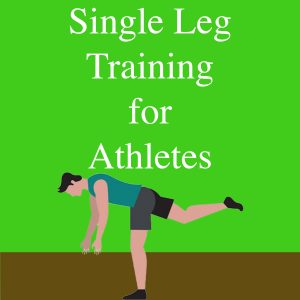
Unless you’re a kangaroo, not much happens on two legs when you are moving. When walking, almost all the time spent moving is on one leg with the opposite side travelling through the air. In fact, 80% of a walking cycle is made up on a single leg support. During a run or jog, there is never a time where both feet are contacting the ground together.
Like walking, in sports there is very little time spent where bodyweight is split evenly between your feet. Even when both feet are in contact with the ground weight is being shifted from one side to the other to react to what is happening in front of the competitors. Golfers, for example, shift the weight toward the trail side (back leg) in the backswing then the lead side in the downswing when hitting the ball. At impact, when the clubhead meets the ball, most of the weight is on the lead side. According to some research, ground forces of up to 2x bodyweight have been observed on the lead side alone in a golf swing (source)! This transition is similar to tennis players returning a serve, quarterbacks throwing a football, or batters hitting a baseball.
Sports requiring swinging an object, like baseball or golf, often depend on speed for success. Swinging a bat or golf club more quickly allows the ball to go farther. In golf this is important as average driving distance is often closely related to on-course money earned. If more power is able to be generated through the legs- as higher ground forces- the speed the bat or club can increase significantly (source). Using these ground forces allows Hunter Pence of the San Francisco Giants to swing a baseball bat 106 MPH and Kyle Berkshire, the 2019 World Long Drive Champion, to swing a golf club over 145 MPH.
By standing on one leg, the balance demand is higher than when performing an exercise with two legs. This more closely relates to the movements that occur when performing sporting activities like single leg stance and weight shift. Challenging motor control with light to moderate weights has been shown to have positive benefits on the proprioceptive system, which tells the brain where the body is in space. Proprioceptive improvements may help to decrease the risk of injury in athletes.
So if most of our moving in sport and life happens on one leg, why do we typically train with both feet? Sometimes, using both legs for building a foundation of movement is necessary. Once good patterns have been established, progressing to single limb support can improve skills and decrease chances of getting injured in the weight room.
If single leg training is beneficial, what exercises could we do to maximize training benefits?
Single Leg Bridge
Reverse Lunge
Single Leg Deadlift
SL Clock Matrix
